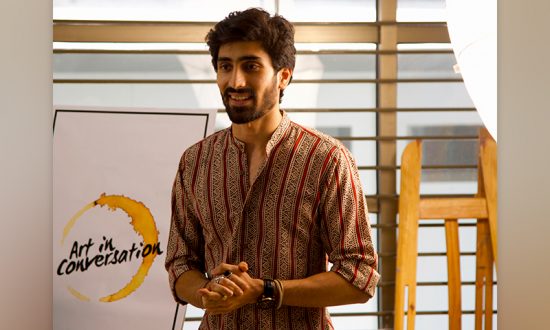He who views a canvas as an open opportunity to erect life the way one wants whilst rendering an imperfect stroke as a way to explore ones creative freedom, resonates strongly with the Co-founder and director of the UNOLONA academy, Harsimran Juneja. Having seen a huge gap in the quality of art and design education offered to students in our country, Harsimran identified the need for a more holistic developmental course and wanted to create an ecosystem of art and design education that prepares students for the practical world with their desired specialisations. With this initiative, UNOLONA was born in 2016 and hence caught onto a momentum where there is no looking back.
Digital education has been around since the early 2000s. But back then, much attention wasn’t given to the quality of education offered. Instead, more than quality, people looked at providing access to as many people and pockets of the country, especially those that lacked infrastructure. That purpose hasn’t changed. Digital education is still aiming at making education more accessible. But the purpose has also evolved where the quality of digital education has become more concrete and is now democratizing the educational space. Even in the K-12 sector, one is no longer restricted to learning only in a physical environment. If there are gaps in learning from a physical environment, digital education can help you cover them. Students may require some facilitation and guidance to do so, but in today’s day and age, information is easily available. Via this, students can now take ownership of their learning and play an active part in the digital world, which is the future of education.
The current landscape of digital education is led by what can be standardized. But, it isn’t surprising as standardization enables scale. A big challenge with online courses however is course completion. It is easier to get candidates to sign up than it is to keep them motivated to complete the course. And that is an area where top players of the online education space have worked hard by bringing in Gamification. Gamification makes learning more effective and serves as a huge motivating factor for children to complete courses. Therefore, one is going to see a lot more gamification of education in the future, to keep the candidates engaged.
In the art and design space, early on, there were a lot of digital platforms that offered quality art and design courses, conducted by art and design professionals. However, these were a lot more hobby-based or skills-based. Teaching skills or hobby-based fields is always easier, especially in the digital space. But that is good for the short term. If one looks at it from a long-term point of view where we aim to sustain creativity, these types of courses may not always serve the purpose. Moreover, many reputed universities and colleges started offering certification programs on digital platforms that did serve that purpose to a great extent, but the awareness of such programs is very low. Bringing one back to the original query, that digital education does require some facilitation and guidance from an educator.
Taking longer-format classes in a digital space is only beneficial for starters, who require a little hand-holding till the time they get adjusted to a way of thinking and build a few basic skills. But this is a step closer to making them, independent learners. Once they do mature a little in their skills as well as thinking processes, short format classes that are more student-centered, focused on dialogue are way more beneficial and fruitful.
Another thing that is crucial for online learning is the student-teacher ratio in a class. It reduces sizably in a digital space, to a level that it might not even be viable for academies. Hence, a balance between live sessions as well as pre-recorded sessions is the way to move forward. In addition, bringing in peer-peer learning as well as evaluation might aid digital learning even more.
As Sir Ken Robinson rightly said, that as a teacher, one should think like a gardener. One cannot force a plant to grow, but one can feed its natural desire to do so. Similarly, one can’t force learning upon a child, but one can facilitate it by understanding what makes them curious. As an educator myself, I believe that some core challenges in the digital learning space are common to a physical environment. One can address some of these challenges in the digital space better than the physical because it is almost like a fresh start, with no traditions looming over us. We can try to find a balance between building competencies and building skills and aim at preparing students for a world where the only constant is change.




